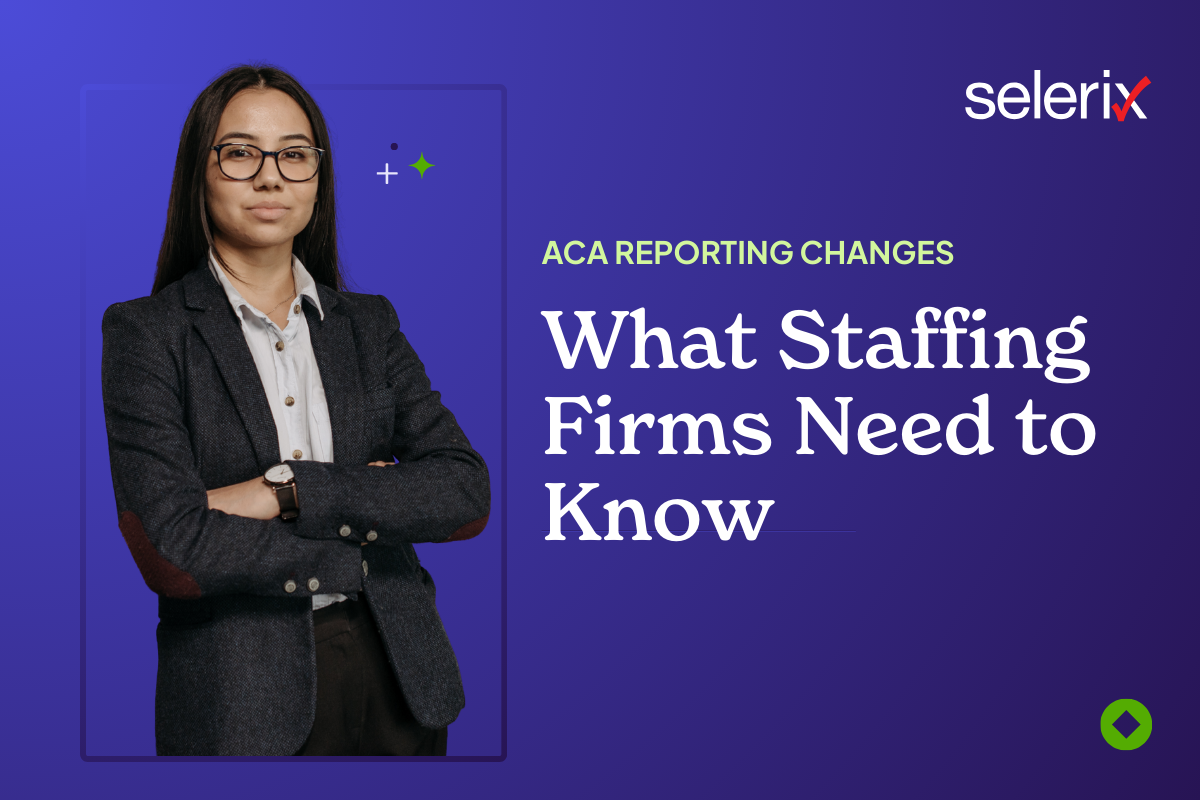ACA Reporting Changes: What Staffing Firms Need to Know

If you work in staffing, you already know ACA compliance is a moving target. Between variable-hour employees, high turnover, and shifting IRS deadlines, it can sometimes feel like you need a full-time referee just to keep score.
The good news? Two new laws—the Paperwork Burden Reduction Act and the Employer Reporting Improvement Act—are designed to take a little weight off your clipboard. For staffing firms, that means potential relief from some of the most time-consuming parts of ACA reporting, plus new tools to keep errors from slowing you down.
Here’s what you need to know, and how to turn these changes into real wins for your business.
Breaking Down the New Acts
Paperwork Burden Reduction Act
Think of this one as spring cleaning for your compliance desk. The goal is to simplify reporting requirements by reducing duplicate forms and expanding electronic submission options.
For staffing firms:
- Potentially fewer forms to chase down from employees.
- More streamlined reporting workflows.
- But—you’ll still need airtight tracking of hours, eligibility, and coverage. Fewer forms doesn’t mean less accountability.
Employer Reporting Improvement Act
This act zeroes in on accuracy and efficiency. By modernizing how the IRS validates reporting data, staffing firms can expect fewer rejections and faster feedback.
For staffing firms:
- Reduced back-and-forth with the IRS.
- Cleaner submissions = less wasted time.
- However, with smarter validation comes less wiggle room. If your data collection isn’t strong, mistakes may stand out more than before.
What These Changes Mean for Staffing Firms
In plain terms: more breathing room.
- Reduced paperwork means your HR and compliance teams can spend less time buried in forms and more time supporting placements and client needs.
- Fewer reporting errors means less frustration when you finally hit “submit.”
- Improved efficiency means you can focus on what you do best—matching people with opportunities—without ACA compliance constantly tripping you up.
Still, these changes don’t eliminate the need for solid systems. The staffing model—temporary workers, fluctuating schedules, and multiple worksites—makes ACA reporting uniquely complex. Flexibility is a gift, but only if you’ve built the right foundation.
3 Ways Staffing Firms Can Take Advantage of New ACA Flexibility
- Upgrade Benefits Tracking Systems
- Hours, eligibility, and coverage data should flow automatically into your reporting solution. Manual spreadsheets are where errors (and IRS letters) are born.
- Train Your HR & Compliance Teams
- New rules are only helpful if your staff understands them. Make sure your teams know what’s changing, and where the new pitfalls may be hiding.
- Leverage a Compliance Partner
- ACA compliance is never truly “set it and forget it.” A trusted partner can help interpret IRS updates, keep reporting current, and give your teams peace of mind that nothing slips through the cracks.
The Bottom Line
ACA reporting in 2025 may come with a lighter load, but staffing firms still need to play smart. By upgrading systems, training teams, and leaning on expert partners, you can turn these changes into genuine efficiency gains—and keep compliance from slowing down your business.

Download our free guide: Common ACA Pitfalls & How to Avoid Them to make sure your firm is ready for what’s next.
Looking for a partner who can carry this for you? Our team at Selerix works with staffing firms nationwide to help navigate ACA compliance. Talk to one of our ACA Experts.

